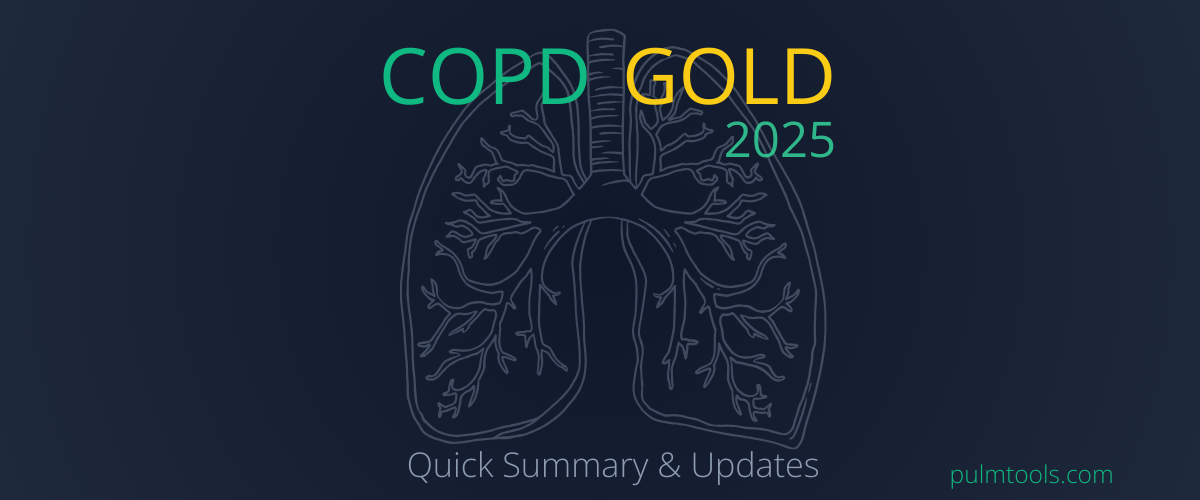GOLD COPD Staging: A Quick Guide
A concise overview of GOLD’s airflow limitation grades and how to use them with symptom burden and exacerbation risk.

Chronic Obstructive Pulmonary Disease (COPD) affects millions worldwide. To standardize care, the Global Initiative for Chronic Obstructive Lung Disease (GOLD) provides criteria for staging COPD severity. These stages help guide diagnosis, treatment, and prognosis.
GOLD COPD Severity Staging
Severity is based on post‑bronchodilator FEV₁ (% predicted), and is only applied when airflow obstruction is present, i.e., FEV₁/FVC < 0.70.
| Stage | Label | FEV₁ criteria (with FEV₁/FVC < 0.70) |
|---|---|---|
| GOLD 1 | Mild | FEV₁ ≥ 80% predicted |
| GOLD 2 | Moderate | FEV₁ 50–79% predicted |
| GOLD 3 | Severe | FEV₁ 30–49% predicted |
| GOLD 4 | Very Severe | FEV₁ < 30% predicted |
Disclaimer: This summary is provided for educational purposes only and does not replace the official GOLD guidelines. For the complete and up-to-date recommendations, please visit goldcopd.org.
Normal spirometry requires a preserved ratio (FEV₁/FVC ≥ 0.70) and typically FEV₁ ≥ 80% predicted. GOLD 1 (Mild) means obstruction is present but FEV₁ remains ≥ 80% predicted.
Beyond Spirometry
GOLD staging is only one piece of assessment. Management also considers symptom burden (CAT, mMRC), exacerbation history, and comorbidities (CVD, osteoporosis, diabetes, anxiety/depression). Patients are grouped as A, B, or E (exacerbation‑prone) to guide initial therapy.
Why It Matters
- Treatment decisions: Guides bronchodilator and anti‑inflammatory choices.
- Prognosis: Lower FEV₁ often correlates with worse symptoms and outcomes.
- Education: Core framework for students and early‑career clinicians.
PulmTools Resources
- 🧪 ABGenius – ABG Interpretation Simulator
- 🩸 VBGenius – VBG vs ABG Estimator
- 📊 ARDSNet Calculator
- 📖 GOLD COPD Resource (PDF + Quick Summary)
References
For full details, review the official GOLD report at goldcopd.org.